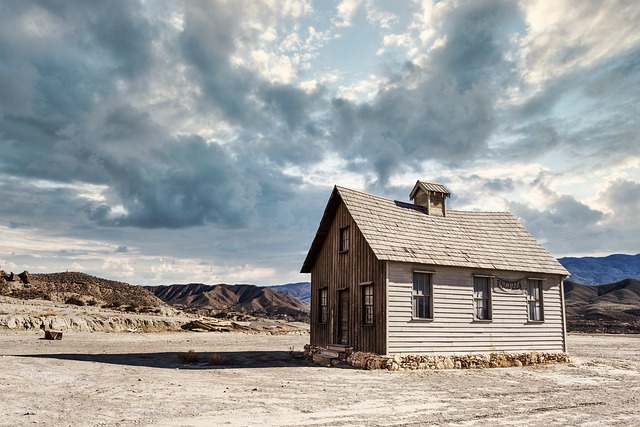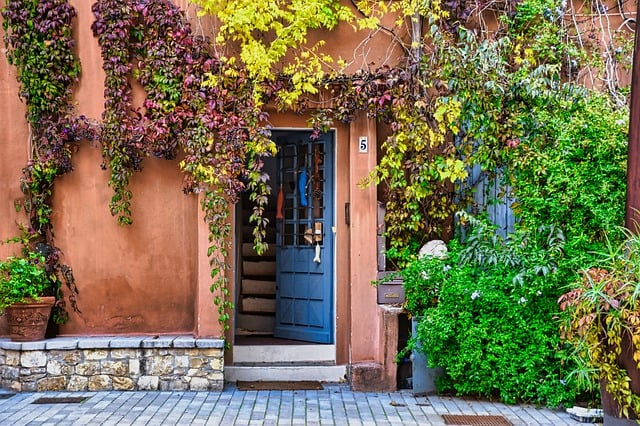When preparing for home emergencies, having reliable flashlights for home use is essential. Opt for durable models made with aircraft-grade aluminum or impact-resistant plastic to ensure they can handle drops and environmental challenges. For brightness, look for a minimum of 200 lumens to effectively light up rooms. Consider flashlights with multiple modes to extend battery life during extended power outages, and choose water-resistant models to maintain visibility in wet conditions. LED flashlights are a smart choice due to their energy efficiency and long operational life. Ensure your emergency preparedness kit includes a high-quality flashlight, and place additional flashlights near key areas such as entrances, bedrooms, kitchen, and garage for immediate use when needed. Include spare batteries, clean the lenses regularly, and perform full-power tests to guarantee readiness. For outdoor emergencies, HID flashlights with LED technology offer long-range illumination, while indoor flashlights should have a focused beam to avoid glare. Adjustable focus or multiple beam settings are beneficial for various tasks and conditions. When selecting flashlights for home use, prioritize features that ensure durability, reliability, and ease of operation to guarantee they function when most needed.
When disaster strikes, the immediacy of visibility can be a matter of safety and survival. In this comprehensive guide on “Must-Have Tools for Home Emergencies,” we delve into the critical role flashlights play in ensuring your household’s well-being during unexpected events. From essential features that define high-quality flashlights for home emergencies to the best practices for storing and maintaining these indispensable tools, this article equips you with knowledge on selecting the right flashlight for your home safety kit. We explore types of flashlights suitable for home safety kits, the importance of durability and power source variations, and how to strategically place them for optimal accessibility. Additionally, understanding beam types and light output for various emergency scenarios is key, as is grasping how each factor influences the performance of your chosen flashlight. Prepare to illuminate your path to safety with “Flashlights For Home Use,” your definitive guide to being prepared when the lights go out.
- Essential Features of High-Quality Flashlights for Home Emergencies
- Types of Flashlights Suitable for Home Safety Kits
- The Importance of Durability and Power Source Variations in Emergency Flashlights
- Best Practices for Storing and Maintaining Home Emergency Flashlights
- Strategic Placement of Flashlights Around the House for Optimal Accessibility
- Understanding Beam Types and Light Output for Various Emergency Scenarios
Essential Features of High-Quality Flashlights for Home Emergencies

When it comes to preparing for home emergencies, having a reliable flashlight is non-negotiable. A high-quality flashlight for home use should be durable and resistant to the rigors of frequent use and various conditions. Look for flashlights made from aircraft-grade aluminum or high-impact plastic that can withstand drops and bumps. A sturdy construction ensures the light will function when you need it most, providing illumination during unexpected power outages or in the event of a home invasion.
Moreover, the brightness level is a critical feature; opt for models offering at least 200 lumens to effectively light up a room and ensure visibility for tasks or navigation around your home. Additionally, consider flashlights with multiple lighting modes—high, medium, and low beams—to conserve battery life when less light is needed and to maximize the flashlight’s versatility. A long-lasting rechargeable battery or disposable batteries that offer a sufficient runtime are essential for extended power outages. Also, features like water resistance can be crucial in protecting the flashlight from accidental exposure to moisture during emergencies. With these attributes, a high-quality flashlight becomes an indispensable tool for maintaining safety and security in your home during unexpected events.
Types of Flashlights Suitable for Home Safety Kits

When assembling a home safety kit, including flashlights for home use is non-negotiable. These essential tools provide visibility during power outages, which are common during emergencies, and can illuminate dark areas that may pose tripping hazards or hide potential dangers. There are various types of flashlights suitable for home safety kits, each with unique features tailored to different needs. Handheld flashlights, often the most versatile, are compact and easy to maneuver. They’re ideal for general use, offering a balance between brightness and battery life. For those who prioritize durability, impact-resistant flashlights designed for home use can withstand rough handling, making them perfect for families with children or pets. Additionally, LED flashlights are a smart choice due to their longevity and energy efficiency. They produce a strong, focused beam that can last for hours on end, which is crucial when you need sustained light during extended outages. Another consideration is flashlights with multiple modes, such as high, medium, and low beams, or even strobe settings. These multifunctional flashlights offer flexibility and can conserve energy by adjusting the brightness to the task at hand. Regardless of the choice, ensuring that your home safety kit includes a reliable flashlight for home use is a key step in preparing for unforeseen events, ensuring you’re ready to navigate through darkness with confidence and clarity.
The Importance of Durability and Power Source Variations in Emergency Flashlights

When assembling a home emergency kit, flashlights for home use are indispensable tools, particularly during power outages or other unexpected events. The durability of an emergency flashlight cannot be overstated; it is a critical factor that ensures the light remains operational when you need it most. A robustly constructed flashlight can withstand the rigors of frequent use and exposure to harsh conditions, such as moisture or dust, which are common in home environments. It’s essential to select a flashlight made from high-quality materials like aircraft-grade aluminum or impact-resistant plastics that can endure drops or impacts without failing.
In terms of power source variations, the best emergency flashlights offer versatility and reliability. Traditional alkaline or rechargeable AA/AAA batteries are widely available and provide a reliable power source, but they can be bulky or have a limited shelf life. Alternatively, LED flashlights with rechargeable lithium-ion batteries offer brighter light output and longer runtime, which is crucial during extended emergencies. Additionally, some models come with alternative power options like USB rechargeability or even hand crank mechanisms, ensuring that you can always generate light when traditional power sources are unavailable. Regardless of the power source, the key is to have a reliable, durable flashlight that meets your needs and is ready to use at a moment’s notice for home emergencies.
Best Practices for Storing and Maintaining Home Emergency Flashlights

When it comes to home emergencies, having a reliable flashlight is not just a convenience; it’s a necessity. Flashlights for home use should be readily accessible and fully functional at all times. Optimal storage conditions are crucial to ensure your flashlight is always ready when needed. Store your flashlight in a cool, dry place to prevent corrosion or condensation that can affect its performance. It’s also wise to periodically check the battery compartment, ensuring that batteries are fresh and properly installed. Regularly testing your flashlight by conducting full-power runs can help identify any potential issues with the light source or connections before an emergency arises.
Maintenance of your home emergency flashlights goes beyond simple storage. Keep an inventory of extra batteries, and replace them at regular intervals to avoid being caught in darkness due to depleted power. Clean the lens regularly to remove any accumulated dust or debris that could diffuse the light. Additionally, check the beam’s focus and adjust if necessary to maintain optimal visibility range. By following these best practices for storing and maintaining your home emergency flashlights, you can ensure they will provide reliable illumination whenever unexpected situations occur.
Strategic Placement of Flashlights Around the House for Optimal Accessibility

During a power outage or unexpected emergency, having flashlights for home use strategically placed can make all the difference. It’s crucial to have them where they are easily accessible and provide adequate illumination when needed. A common area to place flashlights is near the front and back doors. This ensures that upon entering the house in the dark, you have immediate light availability to survey your surroundings and navigate safely. Additionally, placing a flashlight in each bedroom, especially in or near the bedside area, can significantly enhance safety during nighttime emergencies. The kitchen and garage are also practical locations for flashlights, as these areas often require lighting during unexpected power outages. For an added layer of security, consider having at least one high-quality, rechargeable flashlight in a central location, like the living room or near the home’s main access point, so it can be quickly grabbed on the way to investigate a noise or check on different parts of the house.
When selecting flashlights for home use, opt for those with durable construction and reliable batteries or rechargeable options. LED flashlights are a great choice due to their longevity and brightness. The strategic placement of these lights should be part of your family’s emergency plan, ensuring that every household member knows where to find them and how to use them. This proactive measure can greatly increase safety during unexpected home emergencies. Remember to replace the batteries regularly and test the flashlights periodically to ensure they are in working order when needed.
Understanding Beam Types and Light Output for Various Emergency Scenarios

When preparing for home emergencies, selecting the right flashlight can be a critical decision that enhances visibility and safety during power outages or unexpected situations. Understanding beam types is essential as it directly impacts the effectiveness of the light in different scenarios. High-intensity discharge (HID) flashlights, such as those with LED technology, are ideal for outdoor emergencies due to their long-range, bright white beams that can illuminate large areas. These are particularly useful for locating one’s path or surveying an immediate environment during nighttime events like power failures or natural disasters.
For indoor use, flashlights with focused beam types, such as the tactical or spotlight models, are beneficial as they provide a targeted light that can reach far without causing excessive glare on reflective surfaces. Additionally, flashlights with adjustable focus or multiple beam settings allow users to tailor the light output to their immediate needs, whether it’s a wide floodlight for navigating through a dark room or a narrow spotlight for inspecting tight spaces or reading fine print. Flashlights for home use should be durable, reliable, and easy to operate, ensuring that they are ready when needed most. Always consider the lumen output and battery life of your flashlight to ensure it meets the demands of various emergency scenarios, from finding your way in a blackout to checking on neighbors safely.
In conclusion, equipping your home with high-quality flashlights tailored for emergency situations is a prudent step towards safeguarding your family and property. Selecting flashlights with essential features, such as durability, versatile power sources, and strategic placement around the house, ensures readiness when unexpected events occur. By understanding the beam types and light outputs required for different scenarios, you can effectively navigate through darkness during emergencies. Homeowners must prioritize maintaining and storing their flashlights properly to guarantee they are operational when needed. Investing in flashlights for home use isn’t just a precaution—it’s an investment in peace of mind.
